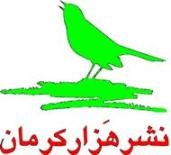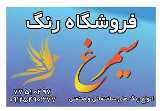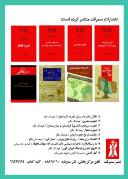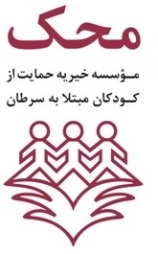Ш¬ЩҮШ§ЩҶ Ш§ЫҢШұШ§ЩҶЫҢ
Prosperity for Iran and Regional Nations
- Ш¬ЩҮШ§ЩҶ Ш§ЩҠШұШ§ЩҶЩҠ
- ЩҶЩ…Ш§ЫҢШҙ Ш§ШІ ШҜЩҲШҙЩҶШЁЩҮ, 31 Щ…ШұШҜШ§ШҜ 1390 18:32
- ШЁШ§ШІШҜЫҢШҜ: 5822
ШЁШұЪҜШұЩҒШӘЩҮ Ш§ШІ ШӘШ§ШұЩҶЩ…Ш§ЫҢ ЩҒШұ Ш§ЫҢШұШ§ЩҶ
H.Tale. PHD
With the collapse of the Soviet Union in December 1991 the geography of a vast region in Asia and Europe changed radically.В A part of the change took place in a zone that is close to and historically and culturally related to Iran.
The upheaval, the downfall of the USSR, resulted in the emergence of 15 new independent states that were hitherto parts of the Soviet Union, and earlier parts of the Tzarist Empire, some of which had been grabbed from Iran at one time or other. These shared many cultural features, and had long historic connections with Iran, and many common cultural roots.
Parts of these nations even had the same language as the Iranians. These nations and their capitals are:
вҖўВ В GeorgiaВ (Tiblisi)
вҖўВ В Armenia (Erevan)
вҖўВ В Republic of Azerbaijan
В В В В (Baku or Badkubeh)
вҖўВ В TurkmenistanВ (Ashkhabad)
вҖўВ В TadzhikistanВ (Dushanbe)
вҖўВ В UzbekistanВ (Tashkent)
вҖўВ В Kyrghyzstan (Bishkek)
вҖўВ В KazakhstanВ (Astaneh,В В В В В В В В В В В В В В В В В В В В В В В В previously Alma Ati)
When, in 1813, the Iranian army was defeated at the hands of the TsarвҖҷs forces, which had by now become modernized, the famous Golestan Treaty was imposed upon Iran.
Later, there was another war and again the Iranian army was defeated because of the modern weapons that the Russians had and also because of the incompetence and apathy of the Iranian king, Fathali Shah. This time the Turkamanchai Treaty was imposed on Iran and parts of Caucasia were taken over by Russia.
Yet again there was a treaty signed in 1881, known as the Aakhal Treaty according to which the entire Central Asia, Turkmenistan, Tajikistan, Uzbekistan, Kyrgyzstan and Kazakhstan, were given over to the Tsar.В Therefore, the Soviet collapse in 1991 was a very significant turning point for Iran.В Unlike the Middle East, where the Arabic language and therefore Arab culture prevail, the Central Asia has a predominant Iranian вҖңaura.вҖқ
Many a great poet or scientist considered to be Iranian or Persian today, was in fact born in Central Asia but all chose to write in Persian which they considered to be their mother tongue. There are tremendous cultural similarities among Iran and Central Asian countries, and many common traditions such as the Norooz, the Iranian new year.
To put it all briefly there is a vast вҖңcultural regionвҖқ that extends from China to Turkey, and includes Central Asia, the Sea of Mazandaran (the Caspian), Caucasia and Afghanistan with Iran at its heart.
The ex-USSR was vast, some 22 million square kilometers in area. But it was largely landlocked вҖ“ had no access to international waters. The newly independent states, too, will have the same problem unless they use Iran as the route to its southern waters.
The Central Asian states completely lack access to warm waters and those of Caucasia, except for Georgia which has some coasts on the Black Sea, do not have direct access to international waters.В Even the Black Sea is not a вҖңfree seaвҖқ in the proper sense because of the Bosphorus and the Dardanelles.В And Iran has 1800 km of coastline on the Persian Gulf and the Sea of Oman, enough for all the countries to its northwest and, particularly, northeast.
Cultural, historic, ethnic, religious and language commonalities can further unite the region towards closer economic, social and cultural cooperation, towards the formation of an economic union, perhaps even something stronger than the EU.В Nations that are so close to each other only need a little common sense, some flexibility and a great deal of farsightedness to plan a great future, today.





